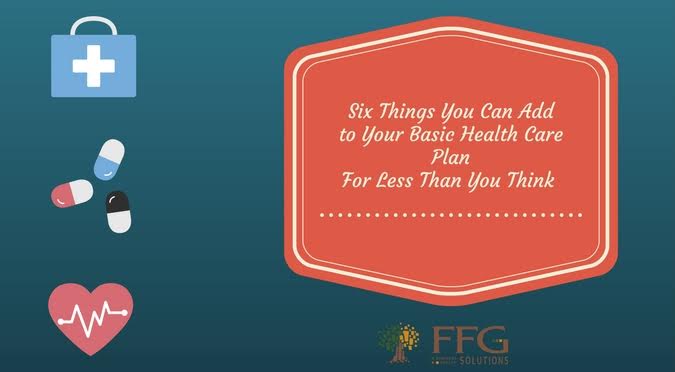
Six Things You Can Add to Your Basic Health Plan for Less Than You Think
Even though we live in Canada, health care is expensive. A recent study by the Fraser Institute points out that an average two-parent family in Canada with two children spends more than $11,000 in healthcare costs every year, but the reason why most Canadians are not going into debt for medical services is because the majority of those expenses are taken care of by the provincial and private healthcare insurance system. The out-of-pocket costs are minimal.
That being said, there are things that the provincial government does not cover. As any parent with a child needing braces knows, dental costs are your own responsibility (except for emergency dental situations such as trauma from an accident).
You can save a lot money if you tailor your health plan to meet your family’s needs. Even if you have coverage at work, adding a private policy can offset major costs that are not covered by your group plan.
For example:
-
Vision Care:
Most group policies do not have robust vision care coverage. If the majority of the adults in your family (parents, grandparents, aunts and uncles, etc.) wear glasses, there is a good chance your children will need them at some point too. If you or your partner are wearing glasses or contacts, replacing them is costly; therefore, vision coverage can save you hundreds of dollars over the years.
-
Dental Coverage:
Most basic plans have dental coverage, but if you foresee braces or any major orthodontic work in you or your child’s future, topping up your dental coverage is a must. There is a suggested fee guide for Alberta dentists, but fees are not regulated or mandated. In fact, Alberta has the highest dental fees in Canada. Having extra dental coverage to cover orthodontics or major restorative work (crowns, inlays) will save you thousands of dollars.
-
Travel Insurance:
Going to Disneyland? Snorkeling in Mexico? Sightseeing in London? If you meet with an unfortunate accident or fall ill while outside of Canada, the costs can ruin more than your vacation. They can ruin your financial health. A hospital stay in the U.S. can run up to $7,000 a day! That’s 20 times more than an average stay in a Canadian hospital. Travel insurance can also cover lost or damaged luggage, trip cancellation, emergency transportation back home and more. Be aware, however, that travel insurance is almost always underwritten retroactively. That means, you can buy it, but when you make a claim, your health, destination and other factors will be assessed. Before you buy travel insurance, ask what the exclusions are. If, for example, you have a pre-existing heart condition and have a heart attack while travelling, your claim may be denied. Likewise if you choose to parachute into the heart of a war zone for fun, the underwriter will not look fondly upon your activities or destination. Travel insurance is best purchased from a broker who can explain the exclusions and assess your qualification risks before your purchase.
-
Accidental Death & Dismemberment (AD&D):
This coverage provides funds (the benefit) over and above your life insurance benefit if you die in an accident. Conditions apply. Death from war, self-harm, or illegal activities (like drunk driving or an overdose) are excluded. The dismemberment rider pays you a benefit if you lose the use of one or both arms, legs, eyes or ears. Death or dismemberment must occur within 365 days of the accident and be a direct cause of the accident to be a valid claim. If you were in an accident, your arm was damaged and 200 days later it was not responding to treatment and had to be removed, that would qualify. However, if you were in a coma from the accident and died more than a year later, your claim would not be valid.
-
Medication:
Prescription medication is the second most costly healthcare component in Canada. Medication accounted for $29 billion of Canada’s annual health care spending in 2013. The bottom line is, most Canadians will need to spend money on medication at some point, be it short or long term. Having coverage for this in place is important. It’s not a matter of if you will need medication – it’s a matter of when.
-
Critical Illness:
Cancer. Heart Attack. Stroke. These are just some of the life-altering conditions that can strike without warning. Serious illnesses lead to financial distress thanks to the high costs of medical care. Even though many health care items are covered provincially, the costs of care givers, deductibles and co-pays for medications, experimental treatments and the cost of taking time off work are not covered. Critical illness provides a living benefit. This means you get the benefit when you are diagnosed with an illness covered in your policy, not when you pass away. The tax-free lump sum can be used in any way you wish, be it a bucket list holiday or treatment at a special facility.
There are so many ways your family can be protected through the value of life insurance. For a few dollars a month, you can save thousands of dollars a year. Speak with us today for a free, no-obligation assessment of your current coverage and see if there are any areas that could use a top up. Invest the time now to save money, headaches and stress later.
